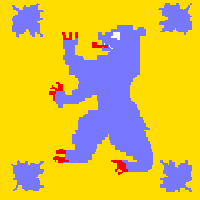(note: click on photo below for larger image; click again for even larger image):

Headquarters Contingent:
- Capt. Alexander Davidson -- (Jan, 1870) -- commanding officer
- Lt. Alex Brightwater -- (Feb, 1871) -- adjutant, 2nd-in-command
- Lt. Robert Locksley -- (Mar, 1872) -- platoon commander
- Sgt. Albert Forrest -- platoon sergeant
- Pvt. David Green
- Pvt. Thomas Peters
- Pvt. Frank McPherson
- Pvt. Alan Hunter
- Pvt. Edward Armstrong
- Pvt. Andrew Richardson
- Pvt. Henry O'Neill
- Pvt. Charles MacDonald
- Pvt. Lloyd Sewell
- Pvt. Edgar Tobin
- Pvt. Peter Lindsay
- Pvt. Elliot Guthrie
- Pvt. James Ball
- Pvt. Timothy Smith
- Pvt. Ronald Atkinson
- Pvt. Howard Wright
- Pvt. George Holden
- Pvt. James White
- Sgt. Owen Alexander -- squad leader
- Pvt. Hugh Jones
- Pvt. Evan Williams
- Pvt. Bryce Davies
- Pvt. Rhys Evans
- Pvt. Tristan Jones
- Pvt. Clyde Thomas
- Pvt. Gavin Blayney
- Pvt. Dylan Hook
- Pvt. Vaughn Thomas
Squad of 3rd Gurkha Regiment
Reserves -- commanded by Lt. Robert Milne -- (Oct, 1872) -- stationed in port of Stupt in the Tewfiq District.
The Cango River System districts are:
- Tewfiq -- veldt -- (Egyptians) -- note: port & fort
- Derf -- farmland -- (Fuzzy Wuzzy) -- note: mission
- Jadu -- hilly -- (Pathan) -- note: trading post
- Zirak -- hilly -- (Pathan) -- note: trading post
- Anwak -- farmland -- (Dervish)
- Bele -- wooded -- (Zulu)
- Noair -- badlands -- (Dervish)
- Quett -- badlands -- (Pathan)
- W'tut -- wooded -- (Zulu)
(note -- the other district forces will appear over the next few days)
==================== ##### ====================
Note -- I have provided names for all of the "British" because these forces are for a campaign. I want the players to become attached to their men so that they become "attached" to their forces . . . and don't throw troops away in fruitless efforts . . . in other words, to behave as field commanders would.







